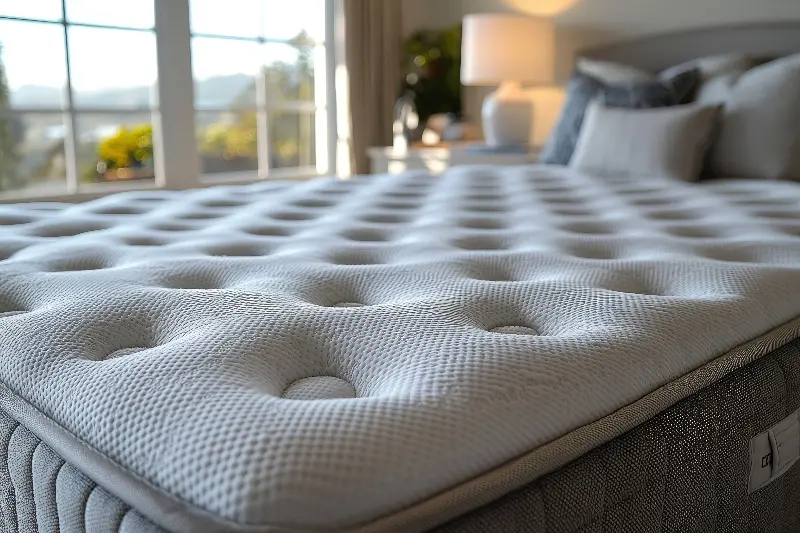
Waking up with aches and stiffness isn’t anyone’s idea of a fresh start. If you’ve ever rolled out of bed feeling more tired than when you nestled in the night before, your mattress might be the main culprit. The relationship between your mattress and your spinal health is too important to overlook. In today’s fast-paced world, the science of sleep is showing us that picking the right mattress isn’t just about comfort—it’s about unlocking a path to a healthier back and spine. Let’s unravel five crucial mattress criteria that you simply can’t ignore on your quest for a pain-free, well-rested life.
Support: The Backbone Of Your Sleep
When experts discuss spinal health, support stands out as the top criterion. Your spine has a natural "S" curve, and a good mattress should maintain this curve during sleep. This means that your mattress must be firm enough to hold your body in alignment while being gentle enough to cushion your pressure points. Whether you’re a side, back, or stomach sleeper, poor support can lead to sagging in the mattress, causing your spine to bend awkwardly. Over time, this misalignment can contribute to chronic back pain, pinched nerves, and restless nights.
Modern mattresses come with a range of support systems—from steel coils to high-density foam or innovative hybrid designs. Pay special attention to the center portion of the mattress, where most of your body weight rests. For added spinal benefits, look for mattresses labeled as having "zoned support" technology, which offers firmer support under the hips and softer zones at the shoulders. This tailored support can make a remarkable difference to your comfort and spinal health.
Firmness: Finding The Perfect Balance
The myth that only an extra-firm mattress is good for your back has long been debunked. Sleep researchers now agree that optimal spinal health depends on finding a mattress with just the right level of firmness—one that’s “not too hard, not too soft.” This balance allows your shoulders and hips to gently sink into the surface, while your lower and upper spine remain aligned. Mattress firmness is often rated on a scale from 1 (the softest) to 10 (the firmest). Most spinal health specialists recommend a medium-firm mattress, typically between 5 and 7 on the scale, for healthy adults.
However, the right firmness is also personal. Factors like weight, sleeping position, and even underlying back issues can influence what feels best. Some mattress brands now offer firmness customization or mattresses with dual-firmness options for couples with different preferences. Before you buy, give yourself time to test a mattress—many companies offer at least 30 nights of risk-free trial, knowing it takes days for your body to adjust.

Pressure Relief: Taking The Weight Off
Waking up with numb arms, tingly hips, or sore shoulders is a telltale sign your mattress isn’t providing enough pressure relief. The best mattresses for spinal health are designed to distribute your body weight evenly, giving cushioning support beneath pressure points while maintaining alignment. Memory foam mattresses and latex mattresses are well-known for their pressure-relieving abilities, contouring closely to the body’s curves.
Pressure relief is especially crucial for side sleepers and individuals with joint pain or arthritis. Some premium mattresses feature multi-layered foam or pillow-top designs that provide a plush, cradling effect without losing support. The real secret here? When pressure points are reduced, blood circulation improves, muscle tension decreases, and you’re less likely to toss and turn through the night.
Breathability: Staying Cool All Night Long
Few sensations disrupt sleep as much as waking up hot and sweaty. Temperature regulation is often overlooked in mattress selection, yet it plays an essential role in keeping your spine happy. Here’s why: if you’re uncomfortable and overheating, you’ll shift position more frequently, which may cause poor spinal alignment through the night.
Look for mattresses with breathable materials such as natural latex, open-cell memory foam, or those enhanced with cooling gels. Innerspring mattresses with good ventilation or beds wrapped in moisture-wicking fabrics are also excellent choices for hot sleepers. Beyond general sleep comfort, breathability keeps you in one healthy, aligned position for longer periods, helping your spine recover and rejuvenate.
Durability: Making Your Investment Last
A mattress is a long-term investment in your health—one that should support not just your nightly sleep but your spine for years to come. As mattresses age, they often lose their structural integrity and start to sag. These dips disrupt spinal alignment and can quickly undo all the hard work you put into maintaining back health.
When weighing your options, check warranty terms and customer reviews for indicators of durability. Hybrid mattresses, combining innersprings with durable foams, often fare well in longevity tests. High-density foams and natural latex are also known for their resistance to sagging and shape retention. On average, expect a quality mattress to give you at least seven to ten years of supportive sleep before replacement.
Unlocking the secret to a healthy spine doesn’t have to remain a mystery. By paying attention to these five mattress criteria—support, firmness, pressure relief, breathability, and durability—you can transform your sleep sanctuary into a foundation for everyday vitality. A well-chosen mattress isn’t a luxury; it’s the cornerstone of your spinal health, energy, and well-being. Your spine—and your entire body—will thank you every single morning.
